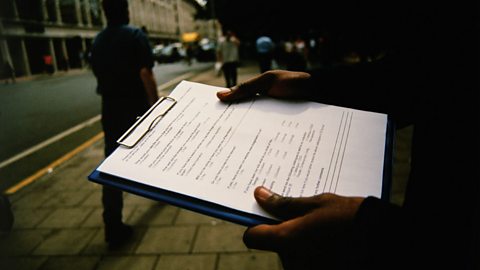Data collection and sampling
All fieldwork requires dataValues, typically letters or numbers. to be collected.
Different data types
Data can either be:
- human - information about people, eg cities and tourism
- physical - information about natural landscapes, eg rivers and coasts
Data can also be either:
- primary - information that is collected first-hand, eg tallies, measurements and photographs
- secondary - information that someone else has previously collected and made available, eg on the internet
Collect any information that will be useful, even from alternative methods, eg counts, scoring systems and bipolar surveyA measurement scale that makes comparisons using opposite pairs of words, eg safe and unsafe.

Data collection sheets should have a simple design so that the results are clear to read. The collection of data should also avoid biasPrejudice or favour shown for one person, group, thing or opinion over another. and this is done through samplingThe selection of subjects included in a study. techniques.
Three data sampling methods:
- Random sampling - selecting a person to interview or site to measure, at random. Random sampling is unbiased as particular people or places are not specifically selected.
- Systematic sampling - collecting data in an ordered or regular way, eg every 5 metres or every fifth person.
- Stratified sampling - dividing sampling into groups, eg three sites from each section of coastline, or five people from each age range. It is possible to combine stratified sampling with random and systematic sampling.
- Stratified random sampling - random samples are taken from within certain categories.
- Stratified systematic sampling - regular samples are taken from within certain categories.